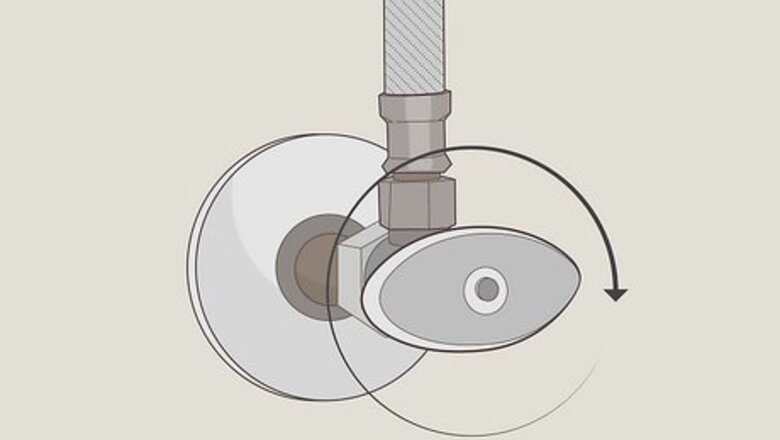
views
Preparing the Space
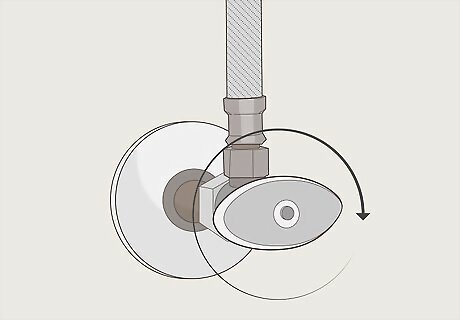
Turn off the water supply valves below the sink. If you look on the wall near the floor, you'll see 2 water supply valves. Turn the knobs completely to the right to shut off the water supply to the sink. If you'd rather turn off the water supply to the whole house, locate the main shutoff valve near your water supply and turn it clockwise. Turn on the hot and cold taps on the sink to test that you turned off the water.
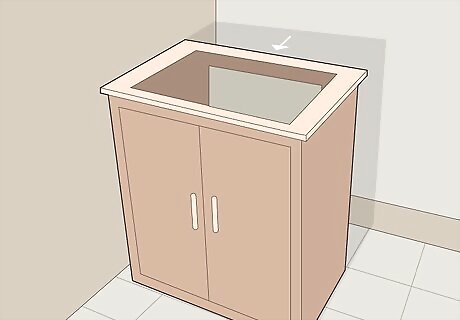
Remove the vanity if you're replacing it with the pedestal sink. You may need an extra pair of hands if you'd like to take out a cabinet vanity. Usually, you'll need to run a utility knife along the caulk between the back of the vanity and the wall. This way, you can pull out the vanity. If you're just replacing an existing pedestal sink, unscrew the sink basin and lift it away before you unscrew the base of the pedestal.
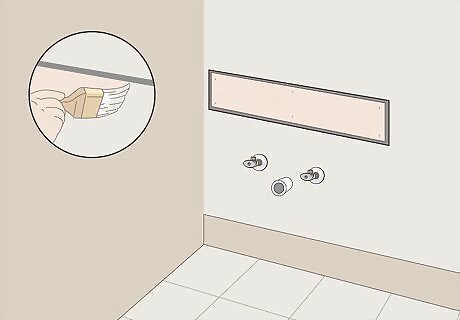
Install a mounting brace on the wall behind the sink. If your sink didn't come with hanger bolts, cut away a rectangular section of the drywall directly behind where the sink will go. Then, cut a piece of lumber to fit the section and cut away from the wall studs, so you can fit the board in place. Drill the mounting board into the studs and patch the wall with drywall and paint. Read the manufacturer's instructions for the specific measurements for your mounting brace.
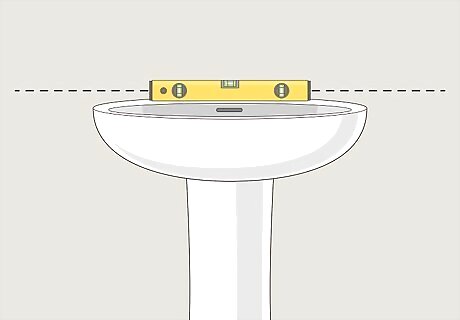
Set the new pedestal sink in place and check that the sink is level. Put the pedestal in where you plan to install it and carefully set the sink on it. Adjust the sink so the back is flush with the wall. Then, place a level on the sink to ensure that the sink isn't uneven. If the sink isn't level, just play around with moving it on the pedestal until it's level. Be careful not to knock or jostle the pedestal sink since it's not securely installed yet.
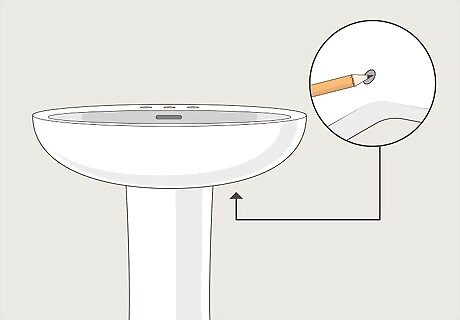
Mark the anchor and bolt hole locations on the floor and wall. While your sink is still in position, take a pencil and mark the 2 anchor bolt holes on the back of the sink where they meet the wall. Then, squat down to the bottom of the pedestal and mark where the bolt hole will go into the floor.
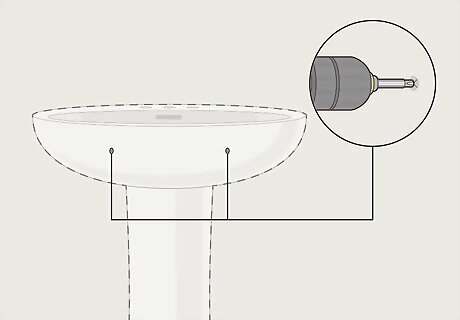
Remove the sink and drill the 3 anchor holes on the wall and floor. Set the sink and pedestal aside while you work. If you're drilling into wood, make the holes ⁄4 inch (0.64 cm) wide. If you're drilling into tile or masonry, make them ⁄2 inch (1.3 cm) wide. Then, insert the anchor bolts. Use an adjustable wrench to tighten the bolts in place. They should stick out at least 1 inch (2.5 cm).
Installing the Sink's Plumbing
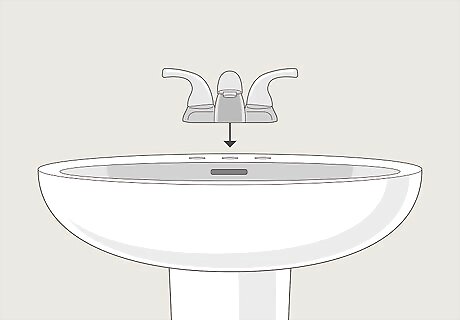
Place the faucet in the sink and tighten it in place. Most faucets have a rubber gasket, so you don't need to do anything other than insert it into the sink and tighten the nut on the underside. It's easier to install the faucet before you secure the pedestal sink to the wall. If your sink has separate handles, insert them and tighten them, too.
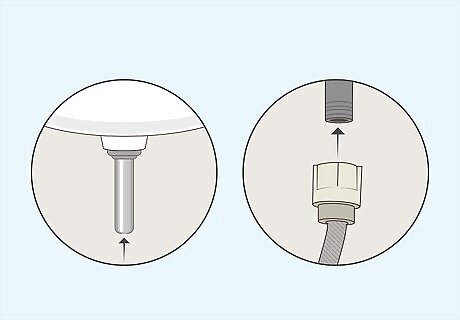
Install the tailpiece and connect the water supply lines. Put the tailpiece into the sink basin where the water drains and pull it through. Then, tighten the nut on the underside of the sink to secure the tailpiece.
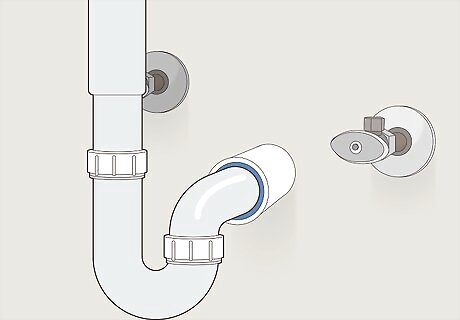
Screw the P-trap onto the outlet on the wall. Since the P-trap will be visible from the sides of the pedestal, choose a stylish P-trap. Twist it clockwise onto the wall outlet until it's secure. Test that the P-trap doesn't stick out too far for the pedestal, or you may need to adjust the outlet's waste pipe length.
Mounting the Sink
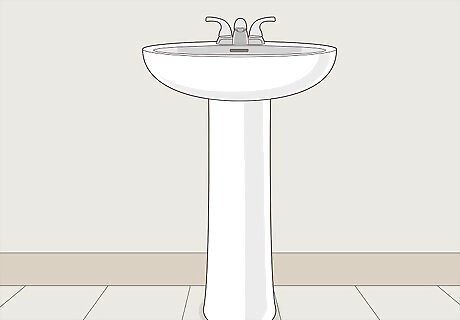
Put the pedestal in place and set the sink on top. Set the pedestal back where you originally had it, so the hole on the bottom fits onto the bottom anchor bolt and the tailpiece fits into the P-trap. Then, place the sink on top, so the anchor bolts go through the holes on the back of the sink. It's a good idea to check that the sink is level before you secure it in place.
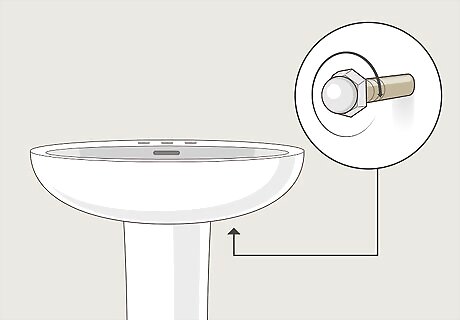
Tighten the nuts to the anchor bolts, so the pedestal sink is secure. Slide the washers and nuts that came with your anchor bolts onto the 3 anchor bolts. Use an adjustable wrench to tighten the nuts. Take care not to overtighten the nuts or you could crack the porcelain.
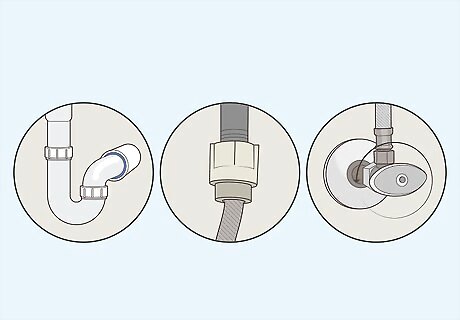
Reconnect the drain and water supply lines. Use a wrench to tighten the P-trap to the tailpiece. Then, screw the hot and cold water supply lines to the underside of the sink and at the water supply valves, so you can turn the water back on. To prevent leaks, you can apply silicone caulk between the tailpiece and P-trap. Let it dry for a full 24 hours before you turn on the water. Then, test for leaks—if you don't see any, then the job's done!


















Comments
0 comment